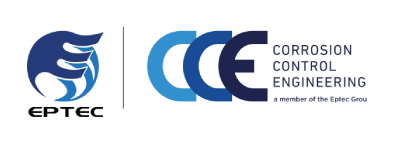In infrastructure and metal-based assets, corrosion poses a formidable threat. Enter cathodic protection – a powerful technique that protects against the relentless forces of deterioration. This article explores the significance of cathodic protection, its mechanisms, and its vital role in preserving critical structures across various industries.
Understanding Cathodic Protection:
Cathodic protection is a corrosion prevention technique widely employed to safeguard metal structures from the corrosive effects of environmental factors. It involves the application of a negative electrical charge to the protected metal, either through sacrificial anodes or impressed current systems. By manipulating the electrochemical reactions that drive corrosion, cathodic protection ensures that metal assets remain resilient against the passage of time.
The Two Faces of Cathodic Protection: Sacrificial vs. Impressed Current:
Cathodic protection has two primary forms: sacrificial anodes and impressed current systems.
- Sacrificial Anodes: Composed of materials like zinc, aluminium, and magnesium, they are strategically attached to the metal structure they protect. These sacrificial materials corrode preferentially, diverting the corrosive forces away from the critical components of the structure. This sacrificial sacrifice ensures that the protected metal remains untouched by the relentless march of corrosion.
- Impressed Current Systems: In cases where sacrificial anodes are impractical or less efficient, impressed current systems come into play. These systems rely on an external power source to supply a controlled electrical current to the metal structure. This current counteracts the natural corrosion process, offering a more precise and adjustable form of protection.
Applications Across Industries:
Cathodic protection finds wide-ranging applications across diverse industries. In the maritime sector, offshore platforms, ships, and underwater pipelines benefit from sacrificial anodes to ward off the corrosive effects of saltwater. In oil and gas, buried pipelines are shielded from underground corrosion, ensuring the integrity of these critical conduits. Bridges, tanks, and industrial facilities also leverage cathodic protection to extend their lifespan and reduce maintenance costs.
Importance in Infrastructure Longevity:
The economic and safety implications of infrastructure degradation due to corrosion are significant. Cathodic protection acts as a bulwark against these consequences, prolonging the lifespan of structures and reducing the need for costly repairs and replacements. This ensures the reliability of critical infrastructure and contributes to sustainable and responsible asset management.
Technological Advancements:
As technology advances, so does the effectiveness of cathodic protection systems. Ongoing research and development efforts focus on improving materials, monitoring techniques, and overall system efficiency. Innovations in the field aim to enhance cathodic protection methods' adaptability and environmental sustainability.
In the ever-evolving landscape of infrastructure maintenance, cathodic protection stands as a stalwart defender, preserving the integrity of metal structures against the corrosive forces of time and the environment. From maritime settings to industrial complexes, the application of sacrificial anodes and impressed current systems showcases the versatility and effectiveness of cathodic protection. As we move forward, the evolution of technology in this field promises even more robust and environmentally conscious solutions, ensuring that our critical infrastructure remains resilient and safeguarded for future generations.





Comments